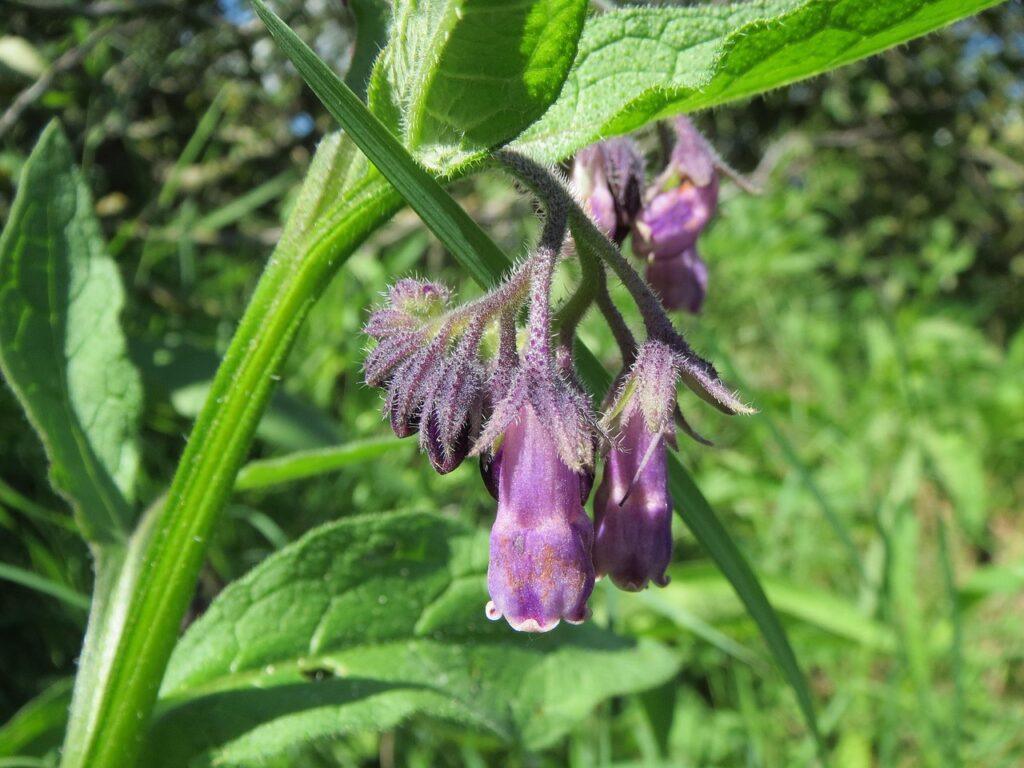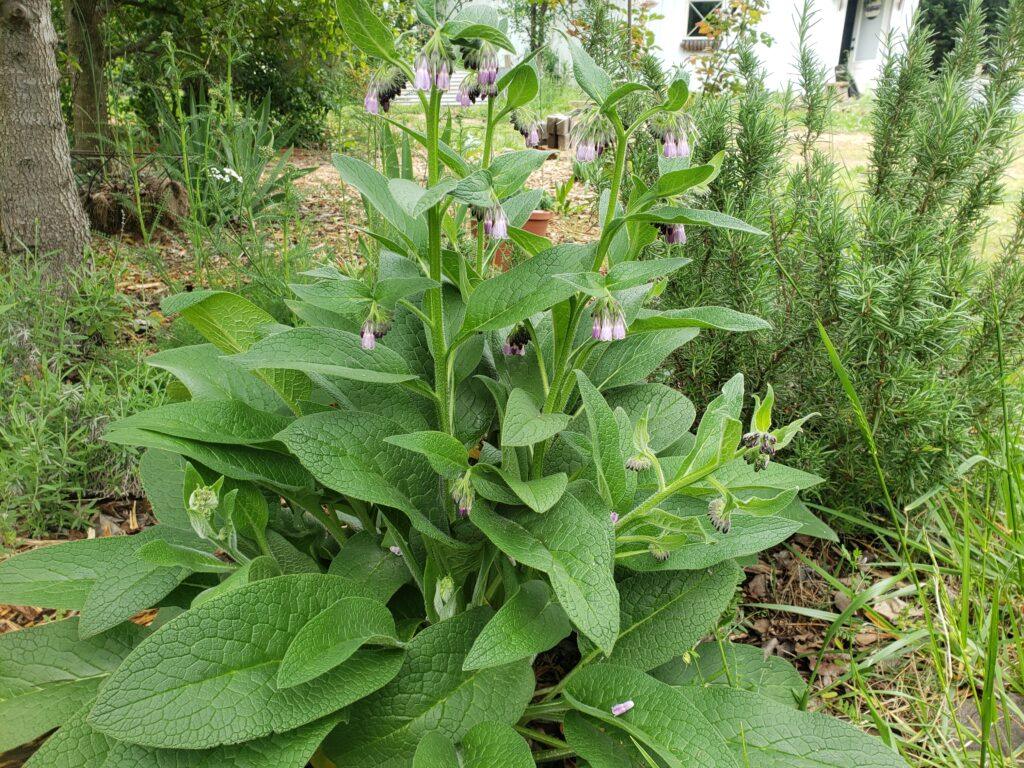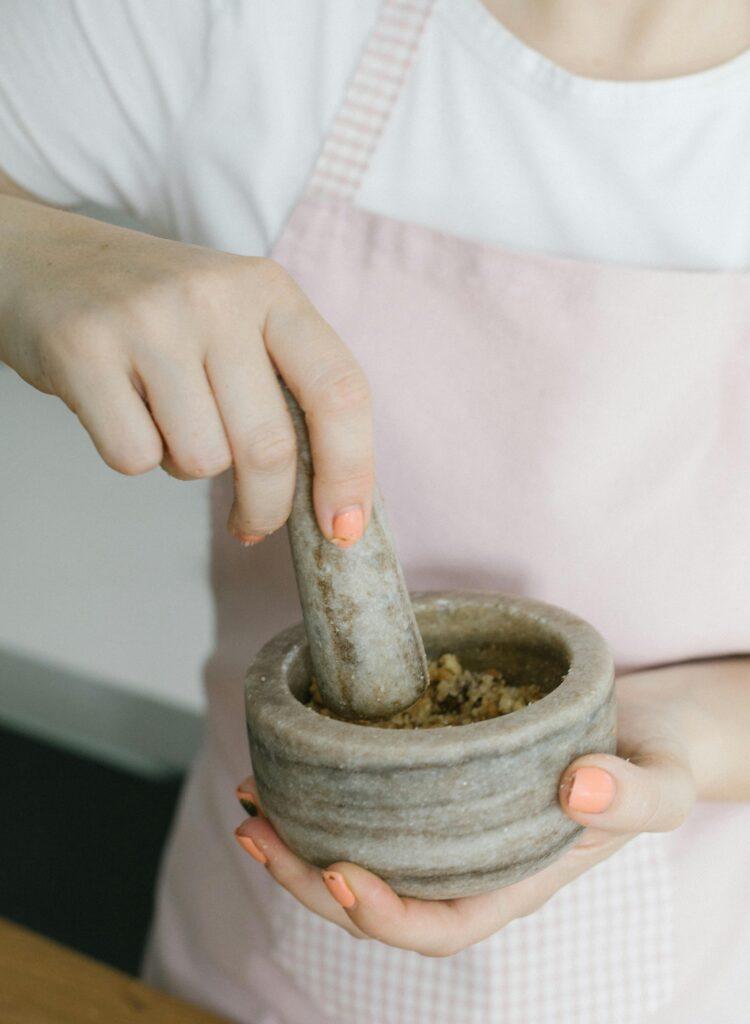- What is Comfrey? The Homestead Marvel
- Comfrey Varieties for the Home & Homestead: Choosing the Right Ally
- The Green Gold: Comfrey's Unsung Benefits for the Garden & Soil
- Comfrey as a Natural Apothecary: Traditional Uses for Humans (with Essential Caution)
- Crucial Disclaimer: Internal Use of Comfrey
- Beyond the Chicken Run: Comfrey's Benefits for Other Livestock
- Growing Comfrey on Your Homestead: Thriving in the Southern Climate
- Conclusion: Embrace Comfrey, Cultivate Resilience
Every homesteader knows the value of multi-purpose plants. We seek out species that offer bountiful harvests, improve our soil, and contribute to the overall health and resilience of our mini-ecosystems. While many know comfrey as an excellent chicken fodder, providing nutrient-rich greens for our feathered friends, its true potential stretches far beyond the chicken run.
From nurturing your garden soil to crafting potent homemade remedies, comfrey is a true homestead marvel. If you’re looking to maximize your land’s output and embrace natural solutions, then understanding this humble plant is a game-changer. Get ready to discover why comfrey as a fertilizer is an essential addition to any self-sufficient homestead, it may even make or break your garden success.
What is Comfrey? The Homestead Marvel
Comfrey (Symphytum officinale or various Symphytum hybrids) is a robust, fast-growing perennial herb often found in temperate climates. Characterized by its large, hairy leaves and bell-shaped flowers (ranging from purple to cream), it’s a plant that thrives on neglect once established. Its deep taproots allow it to access nutrients far below the topsoil, making it an incredibly valuable asset in a permaculture system.
Historically, comfrey has been revered for centuries, particularly for its medicinal properties. Its common name, “knitbone,” points directly to its traditional use in aiding the healing of broken bones, sprains, and bruises. But its applications aren’t limited to human ailments; its nutrient-dense foliage makes it a powerhouse for soil improvement and animal feed. For the modern homesteader, comfrey represents a living, growing resource that continuously gives back to the land and its inhabitants.

Comfrey Varieties for the Home & Homestead: Choosing the Right Ally
While wild comfrey exists, for homestead use, particularly for those concerned about its spread, specific hybrid varieties are highly recommended.
- Bocking 4 vs. Bocking 14: The Non-Seeding Superstars
- Bocking 14 is arguably the most famous and widely cultivated variety for homestead and garden use. Developed by Lawrence D. Hills at the Henry Doubleday Research Association (HDRA) in Bocking, England, its key advantage is that it is a sterile hybrid. This means it does not produce viable seeds, preventing it from spreading uncontrollably throughout your garden or property. It’s also known for its high allantoin content (a compound thought to promote cell growth) and its excellent potassium levels, making it superb for soil fertility.
- Bocking 4 is another sterile hybrid developed by Hills. It’s often praised for its higher protein content, making it a slightly better choice if your primary use is animal fodder. Like Bocking 14, it won’t spread by seed, giving you peace of mind regarding its placement on your homestead. Choosing either Bocking 4 or Bocking 14 ensures you get the benefits of comfrey, so don’t get caught up in the analysis paralysis of wondering which variety to get!
- Multiplying Comfrey from Roots: Easy Propagation for Abundance Because these favored varieties are sterile, you can’t grow them from seed. However, comfrey is incredibly easy to multiply from roots.
- Obtain Root Cuttings: You can purchase root cuttings online from reputable nurseries, or if you know someone with an established plant, ask for a few pieces. Even a small 2-inch section of root with an “eye” (a visible bud) can grow into a new plant.
- Planting: Plant the root cuttings horizontally, about 2-4 inches deep, in well-drained soil.
- Location is Key: Choose a permanent spot, as comfrey’s deep taproot makes it very difficult to move once established. It prefers full sun to partial shade and consistently moist soil. In the Deep South, a spot that gets morning sun and some afternoon shade might be ideal during the intense summer heat.
- Watering: Keep the soil consistently moist until the plant is established. Once it takes off, it’s quite drought-tolerant thanks to its deep roots. This simple propagation method allows you to quickly establish a thriving comfrey patch, providing you with a continuous supply for all your homestead needs.

The Green Gold: Comfrey’s Unsung Benefits for the Garden & Soil
Beyond feeding your livestock, comfrey is an indispensable ally in the organic garden, often referred to as “green gold” by permaculturists. Comfrey as fertilizer could be the one thing that determines whether or not your garden and food forest systems barely survive or thrive!
- A Dynamic Accumulator: Mining the Earth’s Nutrients Comfrey’s incredibly deep taproots (which can extend 10 feet or more!) allow it to act as a dynamic accumulator. This means it draws up essential nutrients like potassium, phosphorus, calcium, and trace minerals from deep within the subsoil that shallower-rooted plants cannot access. When its leaves die back or are harvested and laid in place as a mulch, these concentrated nutrients become available in the topsoil, enriching your garden beds naturally.
- Comfrey Tea: Liquid Gold for Your Plants One of the most popular uses for comfrey in the garden is making a nutrient-rich liquid fertilizer, often called “comfrey tea” (not for human consumption!).
- Harvest Leaves: Gather a large quantity of fresh comfrey leaves.
- Infuse: Pack them tightly into a bucket or barrel. Place a weight on top to keep them submerged.
- Add Water: Fill with water, covering the leaves completely.
- Ferment: Let it steep for 2-4 weeks, stirring occasionally. The smell will become quite pungent, indicating fermentation is underway. (Despicable, in fact) This is the garden good stuff!
- Dilute & Apply: Strain the liquid and dilute it (typically 1 part comfrey tea to 10-15 parts water) before applying it as a foliar spray or drench around your fruiting plants like tomatoes, peppers, and berries. The high potassium content is particularly beneficial for flowering and fruiting.
- Chop-and-Drop Mulch: Building Soil, Naturally Comfrey’s rapid growth makes it an ideal candidate for chop-and-drop mulching. Simply cut the large leaves at the base of the plant (being careful to leave a few inches for regrowth) and lay them directly on the soil around other plants. As the leaves decompose, they slowly release their accumulated nutrients back into the soil, feeding your plants and improving soil structure. This method also helps suppress weeds and retain soil moisture.
Comfrey as a Natural Apothecary: Traditional Uses for Humans (with Essential Caution)
Comfrey’s historical reputation as “knitbone” is well-earned. Its potent properties make it a valuable addition to any natural medicine cabinet, primarily for external applications.

- “Knitbone”: A History of Healing The name “knitbone” stems from comfrey’s traditional use in poultices and compresses applied to sprains, fractures, and bruises. This healing power is attributed largely to allantoin, a compound found in comfrey that is believed to promote cell proliferation and regeneration, thus accelerating healing. It also contains rosmarinic acid, which contributes to its anti-inflammatory properties.
- Crafting Comfrey Salve: Soothing Skin, Bruises & Sprains A homemade comfrey salve is a must-have for minor cuts, scrapes, bruises, and even sore muscles.
- Infuse Oil: Gently warm dried or wilted fresh comfrey leaves (to reduce water content) in a carrier oil like olive oil or almond oil over very low heat for several hours, or infuse over several weeks in a sunny window.
- Strain: Strain the oil thoroughly, pressing out all the oil from the plant material.
- Combine with Wax: Gently heat the infused oil with beeswax (around 1 oz beeswax per cup of oil, adjust for desired consistency) until the beeswax is melted.
- Add Essential Oils (Optional): Remove from heat and add a few drops of essential oils like lavender or frankincense for added benefits and scent.
- Pour & Cool: Pour into clean tins or jars and let cool completely to solidify. This salve is excellent for applying directly to bruises, sprains, insect bites, and minor skin irritations to reduce inflammation and promote healing.
- Comfrey Poultices: Direct Relief for External Ailments For more immediate and intense relief, a comfrey poultice can be applied directly to affected areas.
- Preparation: Mash fresh or rehydrated dried comfrey leaves into a paste (a mortar and pestle or food processor works well). You can add a little warm water or witch hazel to aid consistency.
- Application: Spread the paste onto a clean cloth or directly onto the affected skin (ensure skin is clean and unbroken).
- Secure: Cover with another cloth or bandage to hold it in place.
- Duration: Leave on for several hours or overnight. Poultices are particularly effective for deep bruises, muscle strains, or even boils, drawing out toxins and promoting rapid tissue repair.
Crucial Disclaimer: Internal Use of Comfrey
While comfrey has a long history of traditional internal use, it contains pyrrolizidine alkaloids (PAs), which can be toxic to the liver, especially when consumed regularly or in large quantities. The consensus among modern herbalists and health organizations is to avoid internal consumption of comfrey.
All the cautions about avoiding comfrey internally come from trials performed under extreme conditions not personal experience. Stick to topical applications for skin and muscular skeletal issues. Always consult with a qualified healthcare professional before using any herbal remedies, especially if you have pre-existing health conditions or are on medication.
Beyond the Chicken Run: Comfrey’s Benefits for Other Livestock
Comfrey’s impressive nutrient profile makes it a valuable feed supplement for a variety of homestead animals, improving their health and productivity.
- A Nutrient-Rich Supplement: Boosting Animal Health Comfrey leaves are rich in protein (often 20-30% dry matter), vitamins (A, B12, C), and minerals (calcium, potassium, phosphorus). This makes it an excellent addition to a diverse animal diet.
- Comfrey for Sheep, Goats, and Cattle: Digestive Aid & More
- Sheep & Goats: Many shepherds and goat keepers feed comfrey as a green forage. Its mucilage content can be soothing to the digestive tract, potentially aiding animals with minor digestive upsets. It’s thought to help with overall vitality and even milk production in dairy animals due to its nutrient density.
- Cattle: Comfrey can be incorporated into cattle diets as a high-protein forage, especially beneficial during times when pastures are less lush.
- Comfrey for Chickens: The Original Fodder Friend As mentioned, comfrey is already well-known for chickens. It’s a highly palatable green that provides essential vitamins and minerals, potentially leading to richer yolks and healthier birds. It can be offered fresh, wilted, or fermented.
- Safe Feeding Practices for Livestock:
- Moderation is Key: While beneficial, comfrey should be offered as a supplement to a balanced diet, not the sole feed source.
- Fresh or Wilted: Feed fresh or slightly wilted leaves.
- Avoid Overfeeding: While livestock seem to tolerate PAs better than humans, moderation is still advised. Rotate it with other forages.
- Observation: Always observe your animals’ reactions when introducing new feed. They may just need some time to adjust their tastes to comfrey, or they may already be sufficiently nourished with the specific minerals comfrey provides.
Growing Comfrey on Your Homestead: Thriving in the Southern Climate
Comfrey is incredibly easy to grow, making it a low-effort, high-reward plant for any southern homestead. Both sub-tropical and mediterranean-like climates can abound with comfrey harvests.
- Ideal Conditions & Care: It prefers full sun to partial shade and consistently moist, well-drained soil. It’s not fussy about soil type and can tolerate a range of conditions once established. Mulching around the base can help retain moisture in hot Southern summers.
- Harvesting Your Comfrey Bounty: Comfrey grows rapidly, allowing for multiple harvests throughout the growing season. You can typically cut it back every 4-6 weeks once established (usually after the first year). Cut the leaves about 2-4 inches above the ground, and it will quickly regrow. Regular harvesting encourages more lush growth.

Conclusion: Embrace Comfrey, Cultivate Resilience
Comfrey truly is a powerhouse plant, far more versatile and valuable than its common perception as just a weed. From enriching your garden soil and feeding your food forest systems to providing potent ingredients for your homemade salves and poultices, it embodies the spirit of homestead self-sufficiency.
By integrating comfrey into your homestead, you’re not just growing a plant; you’re cultivating a living resource that contributes to the health of your land, your animals, and your family’s natural well-being.
So, whether you’re starting a new patch from root cuttings or learning to maximize the benefits of an existing plant, embrace the incredible potential of comfrey. Have you used comfrey on your homestead? What are your favorite ways to utilize this amazing plant? Share your experiences and tips in the comments below! We love learning from our fellow homesteaders and building a resilient community together.
